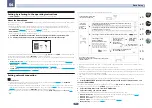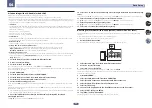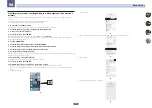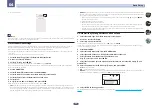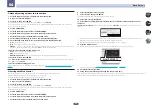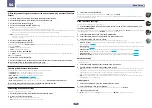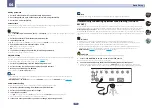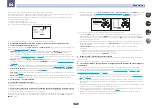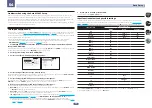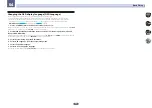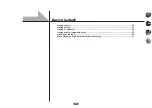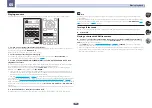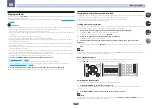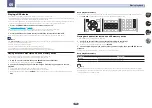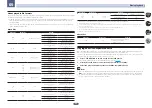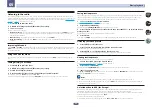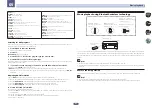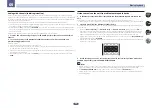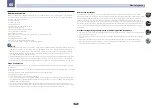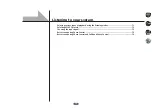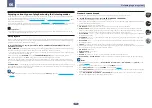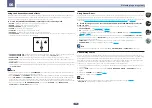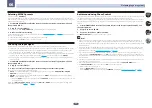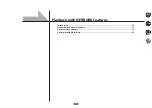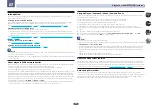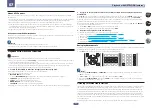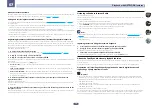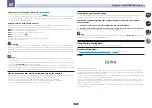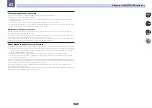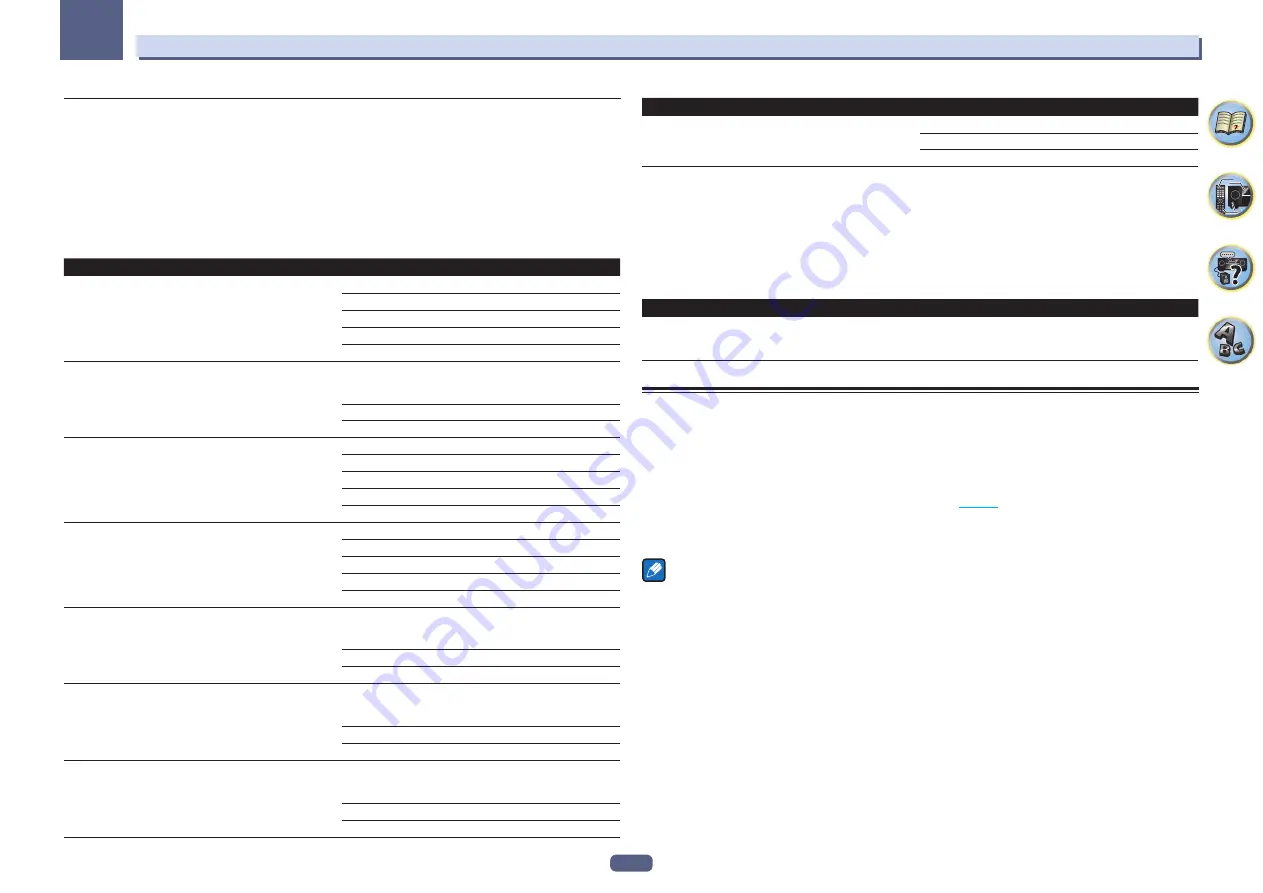
65
Basic playback
05
About playable file formats
The USB function of this receiver supports the following file formats. Note that some file formats are not available
for playback although they are listed as playable file formats.
!
For MP3, WAV, AAC, FLAC, AIFF, Apple Lossless, and DSD files, gapless play will be performed when a music
file with identical format, sampling frequency, number of quantization bits, and number of channels is con-
tinuously played.
—
When AAC or MP3 format is used, sound is reproduced with the minimum gap. If you are conscious about
gaps, use WAV or FLAC files.
Music files
Category
Extension
Stream
MP3
<a>
.mp3
MPEG-1 Audio Layer-3
Sampling frequency
32 kHz, 44.1 kHz, 48 kHz
Quantization bitrate
16 bit
Channel
2 ch
Bitrate
8 kbps to 320 kbps
VBR/CBR
Supported/Supported
WAV
.wav
LPCM
Sampling frequency
<b>
32 kHz, 44.1 kHz, 48 kHz,
88.2 kHz, 96 kHz, 176.4 kHz,
192 kHz
Quantization bitrate
16 bit, 24 bit
Channel
2 ch, 5.0 ch, 5.1 ch
WMA
.wma
WMA2/7/8/9
<c>
Sampling frequency
32 kHz, 44.1 kHz, 48 kHz
Quantization bitrate
16 bit
Channel
2 ch
Bitrate
5 kbps to 320 kbps
VBR/CBR
Supported/Supported
AAC
.m4a
.aac
.3gp
.3g2
MPEG-4 AAC LC
MPEG-4 HE AAC
Sampling frequency
32 kHz, 44.1 kHz, 48 kHz
Quantization bitrate
16 bit
Channel
2 ch
Bitrate
16 kbps to 320 kbps
VBR/CBR
Supported/Supported
Apple Lossless
.m4a
.mp4
Apple Lossless
Sampling frequency
32 kHz, 44.1 kHz, 48 kHz,
88.2 kHz, 96 kHz, 176.4 kHz,
192 kHz
Quantization bitrate
16 bit, 24 bit
Channel
2 ch
FLAC
<d>
.flac
FLAC
Sampling frequency
<e>
32 kHz, 44.1 kHz, 48 kHz,
88.2 kHz, 96 kHz, 176.4 kHz,
192 kHz
Quantization bitrate
16 bit, 24 bit
Channel
2 ch, 5.0 ch, 5.1 ch
AIFF
.aiff
.aif
AIFF
Sampling frequency
32 kHz, 44.1 kHz, 48 kHz,
88.2 kHz, 96 kHz, 176.4 kHz,
192 kHz
Quantization bitrate
16 bit, 24 bit
Channel
2 ch
Category
Extension
Stream
DSD
<f>
.dff
.dsf
DSDIFF
DSF
Sampling frequency
2.8224 MHz, 5.6448 MHz
Quantization bitrate
1 bit
Channel
2 ch
a
“MPEG Layer-3 audio decoding technology licensed from Fraunhofer IIS and Thomson multimedia.”
b 32 kHz supports 2-channel audio sources only.
c Files encoded using Windows Media Codec 9 may be playable but some parts of the specification are not supported; specifi-
cally, Pro, Lossless, Voice.
d Uncompressed FLAC files are not supported. Pioneer does not guarantee playback.
e 32 kHz, 176.4 kHz and 192 kHz support 2-channel audio sources only.
f DSD files cannot be played in the sub zone.
Photo files
Category
Extension
Format
JPEG
.jpg
Meeting the following conditions:
!
Baseline JPEG format
!
Y:Cb:Cr – 4:2:2
Playing an MHL-compatible device
MHL (Mobile High-definition Link) is an interface standard for transmitting digital signals with mobile devices.
MHL can carry high quality multi-channel audio data and 3D/Full-HD video formats.
The MHL-compatible device’s video signals are output from the TV connected to the receiver, the audio signals
are output from the speakers connected to the receiver or TV.
1 Press
u
STANDBY/ON to switch on the receiver and your TV.
For connection of MHL standard-compatible equipment, refer to
2 Press MHL on the remote control to switch the receiver to the MHL.
3 Select and play the desired contents on the MHL-compatible device.
Notes
!
MHL-compatible devices can be operated with the receiver’s remote control by pressing the remote control’s
MHL
button, but depending on the MHL-compatible device being used, some buttons may not be operable.
!
To playback from a MHL-compatible device connected to the receiver on a TV that is also connected to the
receiver, the power to the receiver must be turned on.

